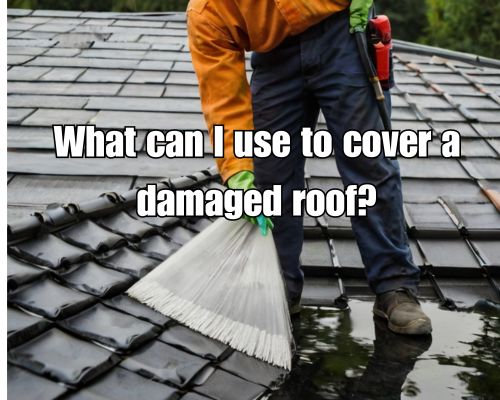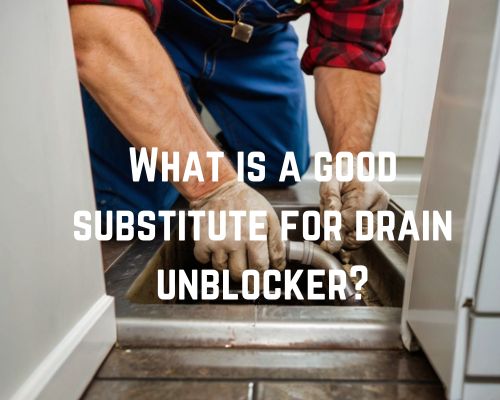What Can I Use to Cover a Damaged Roof?
Top Options to Consider
If you have a damaged roof, you may be wondering what you can use to cover it until you can get it repaired or replaced. There are a few temporary fixes you can use to stop a roof leak and prevent further damage to your home. Keep in mind that these solutions are not permanent and should only be used as a short-term fix until you can get professional help.” said Charles Jimerson of Commercial Roofing NJ.

One option is to use a tarp to cover the damaged area of your roof. This can help keep water out and prevent further damage to your home.
To do this, you will need to purchase a tarp that is large enough to cover the damaged area of your roof. You will also need to secure the tarp to your roof using nails or other fasteners.
Make sure the tarp is securely fastened to prevent it from blowing off in strong winds.
Another temporary fix for a damaged roof is to use roofing cement or sealant to patch the leak. This can be a quick and easy solution if the damage is minor.
To do this, you will need to clean the damaged area of your roof and apply the cement or sealant according to the manufacturer’s instructions.
Keep in mind that this solution is not a permanent fix and may need to be reapplied periodically.
Immediate Temporary Solutions
If you have a damaged roof, it’s important to act quickly to prevent further damage to your home. Here are some immediate temporary solutions you can use to cover your damaged roof until you can get it professionally repaired.
Tarping Your Roof
One of the most common temporary solutions for a damaged roof is to use a tarp. Tarps are a great way to protect your home from rain and other bad weather until you can get your roof repaired. Here’s how to tarp a roof:
- Measure the damaged area of your roof to determine the size of tarp you will need.
- Purchase a heavy-duty tarp that is at least a few feet larger than the damaged area.
- Place the tarp over the damaged area, making sure to overlap the edges of the tarp with the undamaged parts of the roof.
- Secure the tarp to the roof using roofing nails or other heavy-duty fasteners. Be sure to place the fasteners in the undamaged parts of the roof to prevent additional damage.
It’s important to make sure the tarp is securely fastened to the roof to prevent it from blowing away in high winds. If you’re not comfortable tarping your roof yourself, consider hiring a professional to do it for you.
Using Other Temporary Coverings
If you don’t have a tarp, there are other temporary coverings you can use to protect your home from water damage. Blue tarps and plastic sheeting are both good options for covering a damaged roof. Here’s how to use them:
- Measure the damaged area of your roof to determine the size of tarp or plastic sheeting you will need.
- Lay the tarp or plastic sheeting over the damaged area, making sure to overlap the edges with the undamaged parts of the roof.
- Secure the tarp or plastic sheeting to the roof using heavy objects like boards or sandbags.
While these temporary coverings can help protect your home from water damage, they may not be as secure as a tarp. Be sure to monitor the covering regularly and replace it as needed.
Safety and Assessment
Assessing Roof Damage
Before attempting to cover a damaged roof, you must assess the extent of the damage. Climbing up onto a damaged roof can be dangerous, so you need to take all necessary safety precautions.
Begin by inspecting the roof from the ground, looking for any signs of damage such as missing or broken shingles, punctures, or flapping.
If it is safe to do so, climb up onto the roof using a ladder and inspect it more closely.
When inspecting the roof, make sure to check the roof decking for any signs of damage, such as rot or water damage. If you notice any damage to the roof decking, it may be necessary to replace it before covering the roof.
Additionally, check for any pest infestations, such as termites or rodents, which can cause further damage to the roof.
Ensuring Personal Safety
When climbing up onto a damaged roof, it is important to take all necessary safety precautions.
Always use a sturdy ladder and make sure it is securely anchored to the ground. Use wooden boards to create a stable surface to stand on. Then, use screws to secure them to the roof decking.
Wear appropriate safety equipment, including a safety harness, to prevent falls. Make sure to also take caution when working near the edge of the roof, or on a roof with a steep overhang.
If you are not comfortable assessing the damage yourself, it is recommended to hire a professional roofer to inspect the roof and provide instructions for repair.
A roofing professional like Commercial Roofing NJ, have the necessary tools and equipment to safely assess the damage and make any necessary repairs.
In the event of storm damage, it is important to contact your insurance company to file a claim.
Make sure to document the damage with photos and videos, and keep track of all expenses related to the storm damage repair.
